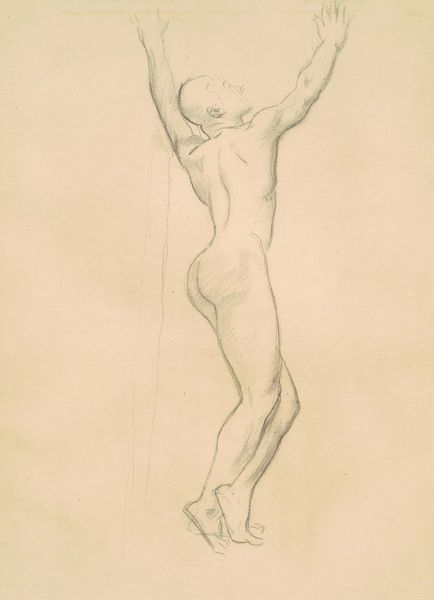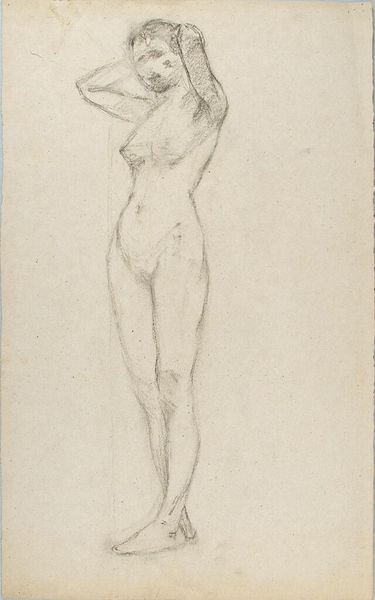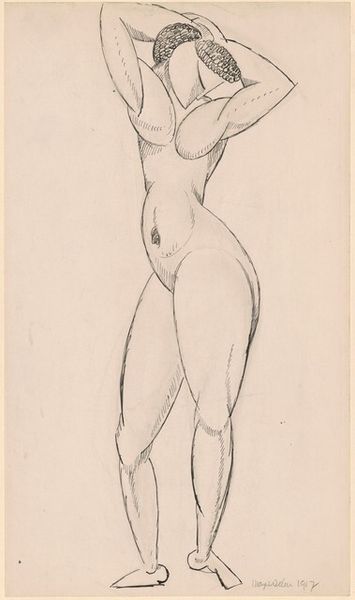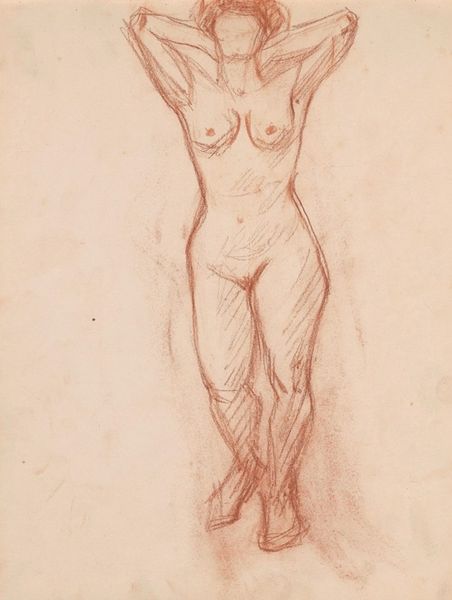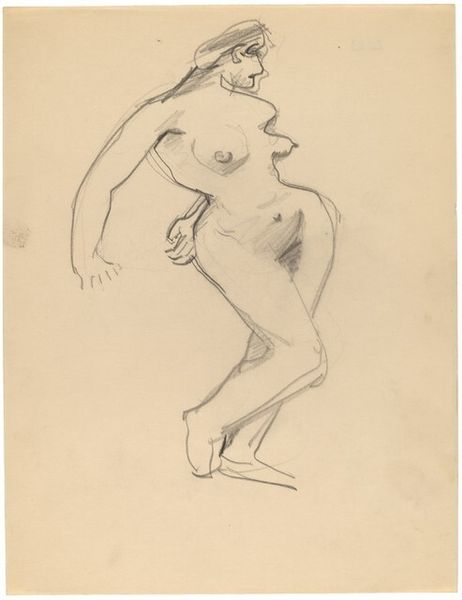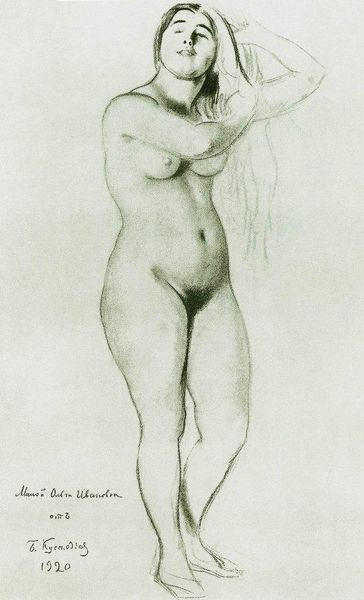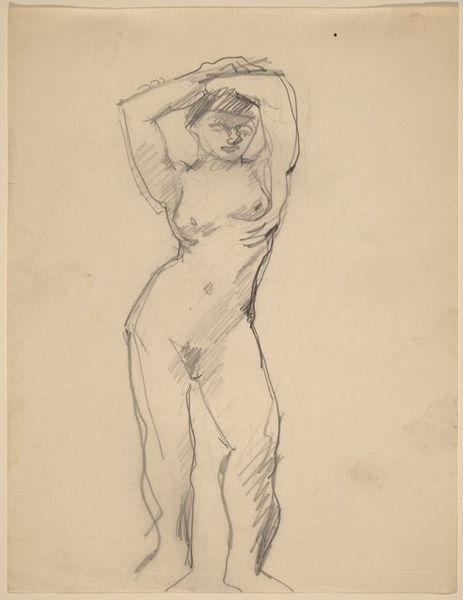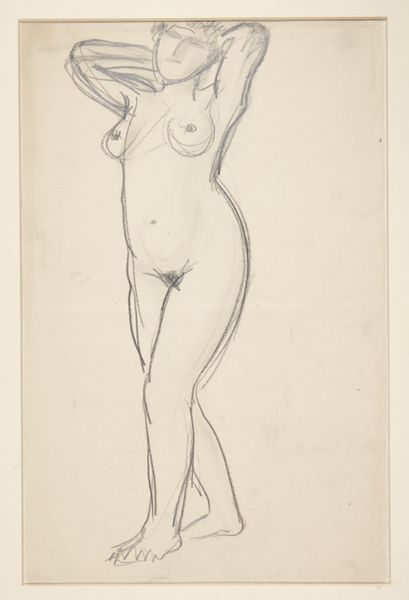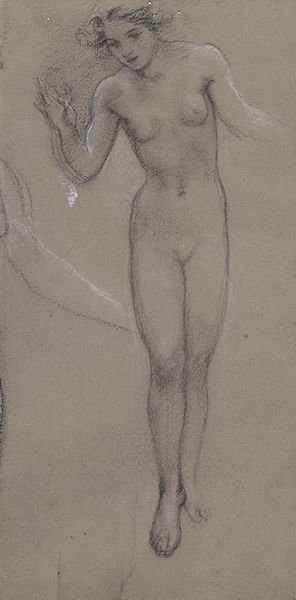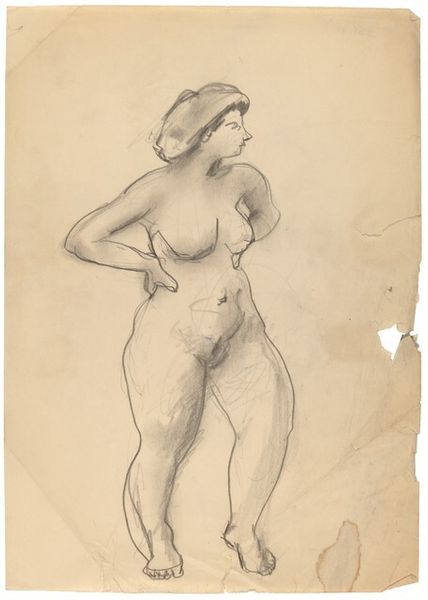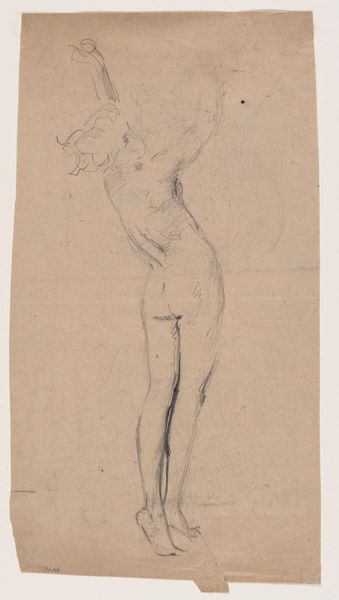
Copyright: Public Domain: Artvee
Editor: Today we are looking at John Singer Sargent’s “Studies of Victory for ‘Death and Victory’”, created between 1920 and 1922. It’s a drawing made with pencil, and I’m really struck by how dynamic it feels. It gives the impression of a figure in motion. What’s your take on it? Curator: Motion, absolutely! It’s interesting to see Sargent, known for his society portraits, delve into such emotionally charged territory. And studies, well, aren't they revealing? You see him thinking aloud in charcoal. These figures almost seem to be reaching—not just physically, but towards some higher ideal, maybe? Almost a desperate grasping in the face of loss. Does the implied narrative impact you, or do you consider the purely aesthetic achievement here? Editor: I hadn’t thought of it that way. I saw the figures more as celebratory, like dancers in a triumphant scene. Curator: A valid take! But given the larger piece it was a study for—'Death and Victory' memorializing WWI casualties— I can't help but sense that the "victory" is complicated, even hollow. A sort of forced, frantic exuberance amidst the ruins. See how the shadows seem to cling to them? Editor: That darker interpretation definitely adds another layer. Now that you mention it, there's a fragility in those lines. Curator: Precisely! The sketchiness enhances the idea of fleeting moments, fleeting triumphs. Nothing is truly solid or certain. Do you see a tension in Sargent's draftsmanship—a beautiful paradox where each stroke carries the weight of history? Editor: I do. It’s like he’s capturing both the hope and the underlying sorrow at the same time. It makes you wonder about the real cost of victory. Curator: It’s a rather haunting reflection, isn't it? A little like finding a joyous melody played on a slightly out-of-tune piano. Imperfect, but all the more moving because of it.
Comments
No comments
Be the first to comment and join the conversation on the ultimate creative platform.
